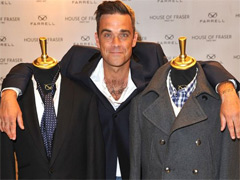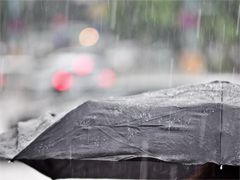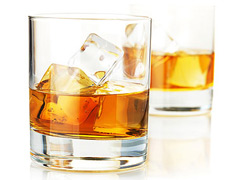
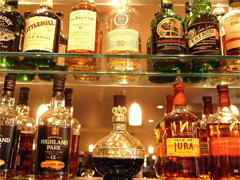
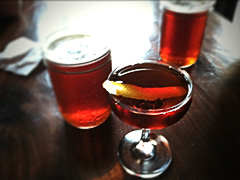
Wine was the first form of alcohol discovered by humans, however fermenting grapes requires a specific climate, hence the greatest wine-producing regions being in France, Italy, Spain and Latin American countries. But somewhere along the line a bright spark realised that pretty much anything containing natural sugars can be fermented, and so places that didn’t have warm temperatures - such as the British Isles - could make booze of their own, with the added bonus of being winter-appropriate.
After the gin revival and brief flirtations with tequila and rum, London is set for a love-in with whisky. In 2012 we saw the first whisky distillery open in London in over 100 years, but although the drink is more commonly associated with Scotland, the capital also has a bit of history with this most warming of spirits.
Types of whisky
The name “whisky” comes from the Gaelic “uisge beatha”, a translation of the Latin “aqua vitae”, which means “water of life”. Whisky is made from water, yeast and grain. Firstly there are regional categories. Bourbon is made in the US, the most famous brands being Jack Daniels, Jim Beam and Maker’s Mark. The rise in popularity of restaurants specialising in American barbecue has meant that more bourbon-based cocktails are appearing on drinks menus (see Pitt Cue Co’s pickle backs and the Bourbon Bar at the City branch of Bodean’s for example). Bourbon is made from fermented corn, which makes it slightly sweeter compared to other types of whisky.
Over in Britain, Scotch whisky is made from malted barley and must be produced in Scotland, aged for three years and matured in oak casks, while Irish whisky is any whisky produced in Ireland and aged for three years in wooden casks.
Then there are single malts, made from one batch of grain but sometimes combined with other whiskies; single barrel, where no other whiskies are added, and blends, which as with wine are a mixture of different whiskies; many believe the single malt whiskies are of superior quality.
There are also differences in production techniques, things like the amount of peat placed in the kiln where the grain is dried, the shape of the pots used to heat the mash, and the quality of the water used (some distilleries pride themselves on being located close to natural springs). All affect the flavour and appearance of the final product.
\n\nWhisky in London
There is a reference to a distilled drink in Chaucer’s Canterbury Tales, published in the 14th century, which may have been a starting point for whisky production in Britain. However what is known for certain is that whisky was being produced in London in the 19th century. One of these production houses was the Lea Valley Distillery in Stratford, which produced both grain and malt whisky, and was modelled on Scottish distilleries. The distillery itself was situated on the banks of the Lea river, while the malt was transported here from a warehouse in Hertfordshire. At their peak they produced 305,000 gallons of grain whisky and 105,000 gallons of malt. They ceased trading by 1910.
Once they closed down, no whisky was produced in the capital since until the London Distillery Company set up shop in 2012. There were several reasons for this: distilling and maturing whisky is an expensive process, so producing things like gin – which only takes three weeks to be ready for sale – is a much easier way for a distillery to make money. At the same time Scotland and Ireland were producing large quantities, making the market a bit too competitive for London.
Based in Battersea, the London Distillery Company make single malt whiskey distilled in a copper pot. They’re committed to some very eco-friendly principles too; by using locally sourced, organic ingredients, solar panels and a system that recycles the heat used by copper pans during the distilling process, to be used elsewhere in the plant. They also plan on experimenting with different recipes and creating bespoke whiskies. As whisky must be aged for three years before it is sold, the first new London whiskies won’t be available till 2015.
\n\nThe Churchill
Winston Churchill was partial to a whisky or three, and it’s been widely reported that he loved a hearty breakfast washed down with a whisky soda. The bartender at the American Bar at the Savoy created the Churchill especially for him. It’s a robust drink made with Scotch whiskey, although Churchill preferred Johnny Walker. There are several cocktails inspired by the former PM; here we show you how to make the perfect Churchill.
1 ½ measures of Scotch whisky
½ measure of red vermouth
½ measure of Cointreau
Squeeze of lime juice
Put a martini glass in the fridge half an hour before making the cocktail. Put all the ingredients in a cocktail shaker and shake with ice. Strain into the cocktail glass and garnish with a slice of lime. Cigar is optional.
Check out our favourite whisky bars here.

